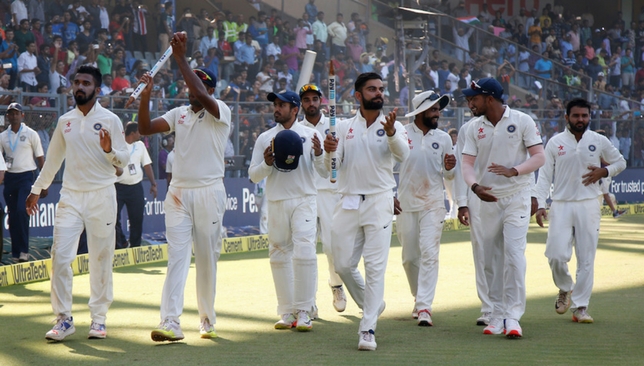
DECEMBER 17, 2012
After giving England a lead of just four runs in the first innings of the fourth Test at Nagpur, India had a clear task on their hands. They had to bowl England out cheaply in their second innings and then come back and chase a total down.
If you’ve followed Indian Test cricket in the past few months, chances are, you have already anointed one team as the winner – and that’s not the one with the Three Lions on its jersey.
England not only managed to draw that game, thanks to some excellent batting from Jonathan Trott and Ian Bell, but also retained a 2-1 lead in the four-Test series.
So, after a comprehensive defeat in Ahmedabad, England bounced back to win two games on the trot in Mumbai and then in Kolkata which meant that the Indians were the ones who were under pressure to get something from the series by winning in Nagpur.
Anything less would be one of the biggest dents in the confidence of a side which was already reeling with issues.
Alastair Cook was full of praise for @imVkohli for his superb captain's knock that continued his fine form #IndvEng pic.twitter.com/w15q3jPpxj
— ICC (@ICC) December 12, 2016
As it turned out, Nagpur was everything India didn’t want. England managed to draw the game and win the series 2-1. Everyone you heard, everything you read, anything you watched, seemed to center around this defeat.
Indian cricket fans take a lot of pride in their home record and it’s that advantage the team so dearly miss overseas. To see opposition spinners bamboozle their batsmen like a truant by a surprise exam the day following his absence in the class, was alarming.
And to watch the opposition batsmen play India’s spinners on the same pitches better than their own was just thrusting their ears against that alarm.
Quite often in sport, there are moments which change the course of a series or a tournament. Kevin Pietersen’s 186 at the Wankhede in Mumbai was perhaps that for England.
To see someone, who was dancing (quite literally) to the Indian spinners’ music in the first Test, come out and bat with such application was mesmerising to watch regardless of which side you were supporting.
Kohli has scored more runs in this series against spin alone (360) than any of England's players have scored in total. #IndvEng
— Freddie Wilde (@fwildecricket) December 11, 2016
DECEMBER 17, 2016
Four years on, the world has changed quicker than most expected.
Cricket has changed too. But, when England came to Rajkot to play the first of five Tests, everyone you heard, everything you read, anything you watched, seemed to be talking about that defeat. It seemed like a part of Indian cricket was still there, unmoved, frozen as if it sought an end, one which would fit the bill better.
At stumps on the second day of the final Test of the series in Chennai, India are 60/0 in reply to England’s 477. But, this doesn’t send tremors across Indian fans, the media or the team. Because this time, England landed in Chennai under immense pressure to perform and get their first win in the series.
[interaction id=”5852e7ebe3b701d268e3f41d”]
The Indian Test side of 2016 has been comprehensive under its new leader, Virat Kohli. They’ve played like a team hungry to win. They’ve played to fill the void that the 2012 defeat created.
So, irrespective of what the result of the final Test turns out to be, as on December 17, 2016, England have conceded a series defeat to India with a scoreline which won’t read more than one against England’s name.
In the drawn Test at Nagpur (which India had to win to level the series in 2012), Kohli scored a fighting 103 only to see his team fail to pull off a win. Four years later, as the leader of his side, he has turned the tables around.